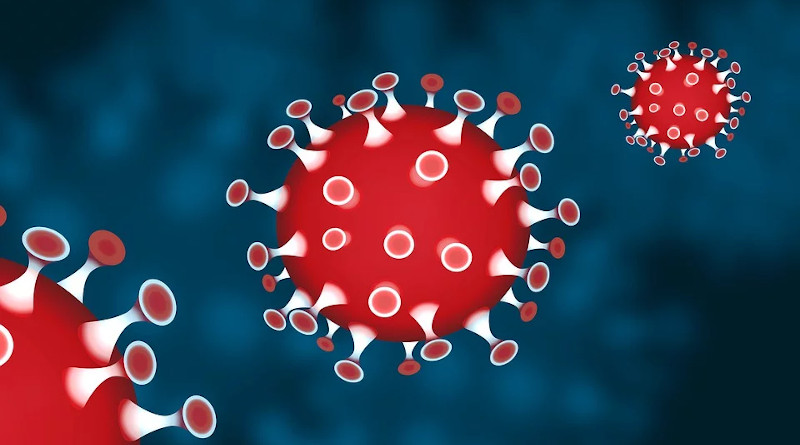Singapore’s Fight Against The Coronavirus On Social Media – Analysis
By IDN
By Archana Atmakuri*
Over 60 countries are now fighting confirmed and suspected cases of the novel coronavirus (COVID-19), with the highest number of cases outside China recorded in South Korea, Italy, Iran and Japan as of today. Singapore has 117 confirmed cases but 80 patients have recovered as of 5 March.
While governments are grappling with medical measures to treat COVID-19, there is a lack of responsibility to act against online malice and to use social media effectively in the battle to reduce mass panic. Measures taken by the Singapore government to use social media to ease concerns of its citizens and combat misinformation online provide important lessons.
On hearing news of the outbreak, the immediate reaction of citizens is often anxiety and panic. After reporting the first cases of COVID-19, Singapore’s government took steps to reduce panic by updating citizens regularly via social media. After Singapore raised the Disease Outbreak Response System Condition (DORSCON) level from yellow to orange — a higher risk of spread — citizens began hoarding groceries, toilet paper, masks and thermometers. But the government was quick in trying to reassure and calm citizens.
On Instagram and Facebook, posts were shared of the Minister for Home Affairs and Law K. Shanmugam visiting a popular supermarket in the shopping district Yishun Central, assuring the public that shelves were adequately stocked. In a video message, Prime Minister Lee Hsien Loong told Singaporeans that the government is well-prepared and will be stepping up its medical measures in fighting COVID-19. And much of the panic hoarding subdued after the media began reporting that Singapore is sufficiently stocked with food and essential supplies. The government also implemented temperature checks in high traffic public spaces such as gyms and cafeterias.
One of the best ways to stay in touch with citizens is through the popular messaging application WhatsApp. WhatsApp is often criticised for spreading fake news, especially in large countries like India. But Singapore’s government uses WhatsApp to regularly update citizens on the number of cases, disperse news on precautionary measures and debunk fake reports via a government broadcast group called Gov.sg.
For instance, a WhatsApp message was circulating warning citizens to avoid certain places that suspected cases had visited. But the group Gov.sg stepped in, claiming that the message was false. Gov.sg also stated on Facebook that “there is no need to avoid places where suspected or confirmed cases of [COVID-19] have been” and that “the risk of infection from transient contact, such as in public spaces, is low”.
WhatsApp is regularly used to send updates on how to maintain hygiene and disinfect public spaces including transportation. In early February, reports of surgical masks running out of stock went viral on social media. The government immediately supplied four free masks per household to ensure even distribution and reduce mass hysteria. Citizens could track where to collect masks by joining their zone groups on messaging application Telegram.
There are lessons to learn from Singapore’s response to COVID-19. Using social media effectively and providing regular updates can curb panic among citizens and keep them better informed. The media has also been increasing focus on positive aspects and highlighting the continuous support provided for healthcare workers since the virus began to spread. After every case reported, the government has also focussed on the number of cases cured and discharged. Balancing reporting on positively and negatively tested cases has been critical to keeping citizens calm through the epidemic.
Singapore’s Ministry of Health also invited experts to discuss sanitisation procedures and good hygiene, as well as provide detailed information about how the virus spreads to keep citizens informed. Governments must also educate citizens on how to handle fake news. The Singapore government swiftly provided a detailed report on the misinformation that was published and clarifications on reputable sources of information. Singapore’s creative way of dealing with COVID-19, particularly online, has been effective in restoring normalcy.
The Protection from Online Falsehoods and Manipulation Act (POFMA) in Singapore seeks to prevent the electronic communication of falsehoods, defined as false statements of fact or misleading information. Since the law first came into force, it has been criticised extensively for primarily targeting civil activists, non-governmental organisations and political opposition figures. While there is a need to fight online fake news globally, this law has exposed the perils in not defining the fine line between news and opinion.
In the battle against COVID-19, Singapore’s measures to fight against the spread of online misinformation shows the efficient role social media could play to restore normalcy and to keep citizens informed in an otherwise uncertain environment that continues to generate mass panic in other countries.
*The writer is a Research Analyst at the Institute of South Asian Studies (ISAS) at the National University of Singapore. This opinion piece first appeared on East Asia Forum on 6 March 2020.

